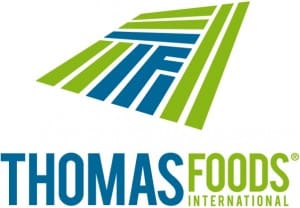
ABATTOIR testing for the sheep-wasting disease Ovine Johne’s Disease is now deregulated nationally after automatic testing for OJD in mature sheep ended at Thomas Food International’s South Australian plants last week.
PIRSA said yesterday that a voluntary system of OJD surveillance was now in place at TFI’s Murray Bridge and Lobethal abattoirs and as from April 20 all producers needed to request abattoir monitoring results for the disease.
The change is expected to diminish the ability of South Australian authorities to monitor the spread of OJD in the state, but South Australia’s chief veterinary officer Dr Roger Paskin said it is likely new SA OJD program arrangements will be in place by early June. He said the abattoir testing change will bring SA abattoir surveillance operations in line with interstate practices.
“Primary Industries and Regions SA supports TFI’s decision to change the surveillance program from being an automatic part of their operations to only being conducted at the producer’s request,” Dr Paskin said.
In August last year, the national Sheep Health Project Steering Committee agreed to make abattoir testing for OJD optional for mutton lines, while retaining inspection for another 19 conditions for all sheep in participating abattoirs. However, automatic OJD testing was maintained at TFI’s South Australian plants until it ended last week.
Last month, Sheep Central reported that South Australian sheep producers could avoid detection of OJD in their flock and circumvent costly PIRSA quarantine restrictions by sending mutton consignments to interstate abattoirs or SA plants not testing for the disease unless asked by producers.
Under the industry-funded SA OJD Control Program, inspectors at the TFI’s SA plants at Murray Bridge and Lobethal inspections for OJD were carried out on all consignments of sheep two years or older, regardless of line size. Monitoring reports from these abattoirs were sent to the Animal Health Advisor located at Murray Bridge on a daily basis. The inspections involved the matching of the NLIS ear-tag carried by sheep with any suspicious gastrointestinal lesions found in that animal to enhance PIRSA’s ability to trace OJD back to the original owner in the case of non-vendor bred sheep.
Some abattoirs stopped doing mandatory OJD testing of mature sheep for fear it would cost them mutton consignments and Livestock SA president Joe Keynes said he believed TFI ended the automatic OJD testing due to concerns it would impact their market share.
Mr Keynes said the SA industry needed to look at the SA OJD Control Program “going forward” and ensure producers were informed of any changes.
“I’m concerned in that we now won’t have any ability to benchmark the true level of OJD in South Australia.
“The key thing is that there are changes happening and producers are going to have to work out how they manage endemic disease of which OJD is one, along with footrot and others,” he said.
“We need to make that producers are well-informed and understand all the changes that might happen.”
PIRSA working with SASAG on new OJD proposals
TFI yesterday declined to answer questions about its switch to voluntary OJD testing, referring Sheep Central to PIRSA for more comment. Chairman of the government-appointed South Australian Sheep Advisory Group Ian Rowett could not be contacted.
Dr Paskin said with the latest changes to the abattoir monitoring program in place, PIRSA is now working with the South Australian Sheep Advisory Group on alternative program proposals for managing OJD in sheep.
“It is likely that new program arrangements will be in place by early June,” he said.
“PIRSA and TFI will also continue to have a close working relationship to support industry and provide products with a high level of quality assurance.”
“It is also important to note that there are no changes to the Enhanced Abattoir Monitoring program and producers will continue to receive results for the 20 other conditions such as arthritis, grass seed and pneumonia/pleurisy by post or email for those producers who have supplied their email address.”
PIRSA said the Voluntary Abattoir JD Surveillance Program is a component of the South Australian Ovine JD control program and is designed to:
- Provide low disease risk assurance through Abattoir 500 and 150 status
- Monitor the levels of the disease in a known infected stock
- Alert producers to new infection.
In addition to voluntary inspections for OJD in sheep in South Australia, South Australian producers can also request their sheep to be inspected when sending sheep to participating interstate abattoirs.



HAVE YOUR SAY